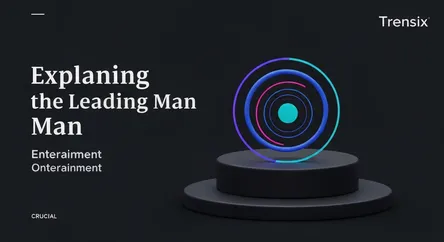Entertainment
Explaining the Leading Man

Discover the definition of a 'leading man' in showbiz. Learn why this classic Hollywood archetype is evolving and its impact on modern cinema.
What is a Leading Man?
A 'leading man' is the primary male protagonist in a film, play, or television show. He is the central character who drives the narrative, traditionally embodying heroic, charismatic, and romantic qualities. Think of classic Hollywood stars like Cary Grant or modern icons like Tom Cruise. This archetype is a cornerstone of storytelling, often serving as the hero on a journey or the primary love interest, capturing the audience's attention and sympathy.
Why is the Concept Evolving?
The traditional leading man is currently a trending topic because the archetype is undergoing a significant evolution. Modern audiences and creators are pushing back against the one-dimensional, hyper-masculine hero of the past, demanding more nuance, vulnerability, and diversity. This cultural shift has opened the door for actors like Timothée Chalamet or Adam Driver, who represent a new, more complex vision of masculinity on screen. The conversation is about expanding the definition beyond its rigid historical confines.
How Does It Affect People?
The leading man archetype has a powerful effect on culture by shaping societal perceptions of masculinity and heroism. For decades, it presented a specific, often narrow ideal. The current evolution of this role reflects and influences changing social values, promoting a more inclusive and realistic understanding of male identity. This affects audiences by providing more relatable characters and challenging outdated stereotypes, leading to richer storytelling.